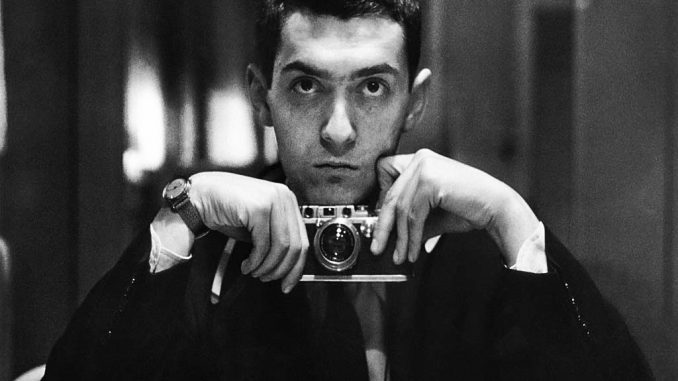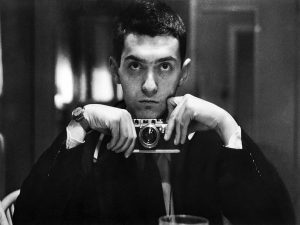
Kate Koenig, Editor-in-Chief
I’ve mentioned him before: Stanley Kubrick. Director of “A Clockwork Orange” (1971), “Full Metal Jacket” (1987) and “Dr. Strangelove or: How I Learned to Stop Worrying and Love the Bomb” (1964) he remains a well-known director especially for “2001: A Space Odyssey” (1968) and the popularity of “The Shining” (1980), starring Jack Nicholson and Shelley Duvall.
Kubrick began his career as a photographer. When he was just 17 years old, he got a job working for Look Magazine and eventually became a full-time staff photographer. His origin in still photography directly shows its influence in his feature films. “2001” leaves you with vivid images of the intense visual sequence the protagonist experiences in the final scene. The movie is defined by its shots of the vast expanse of outer space, emphasized by the powerful score.
His films were often based on novels: “Lolita” (1962), “A Clockwork Orange,” “Barry Lyndon” (1975), “Eyes Wide Shut” (1999). A favorite of mine is “Barry Lyndon,” which was based off of the novel “The Luck of Barry Lyndon” by William Makepeace Thackeray, a work of fiction that recounts the exploits of an 18th century Irish adventurer. The movie was shot entirely without the use of artificial light. Natural sunlight or the candelabra that appear in various scenes were the only sources of light employed throughout the movie.
“The Shining,” based off of Stephen King’s novel of the same name, was one of the few films directed by Kubrick that was not nominated for an Oscar, Golden Globe or BAFTA. While arguably being one of Kubrick’s most popular films to date, it received a nomination for a Razzie for Worst Director, an award from an organization designed to make a mockery of the year’s worst movies. According to a Razzie head member reply to a post on the Razzie.com forum, the film was nominated for the award for Kubrick’s reworking of several scenes in the novel, which apparently deeply upset King’s fans.
There’s a lot of aspects of Kubrick’s filmmaking that captivate me: the still shots, which seem to take his films and turn them into paintings, his use of classical scores that hit you like the opening riff to AC/DC’s “Back in Black,” and the fact that the majority of his great works were drawn from visions he had in reaction to novels from his contemporary time period as well as the 19th century. If nothing else, studying his filmmaking is a surefire way to boost your intellectual self-image.
On top of these elements, he was an innovator. The revolutionary Steadicam, which provides cinematographers with the ability to smooth camera movement, had just come out of its nascence when Kubrick had it used in “The Shining,” specifically in the famous scene that features the young Danny bicycling his tricycle up the Overlook’s hallway. When “A Clockwork Orange” came out in 1971, the violence it contained was also revolutionizing, making waves in the public’s reaction. These days, you might walk out of a screening of “300” and complain that it wasn’t bloody enough.
On a side note, a great spin-off on the topic of Kubrick is the 2005 movie “Color Me Kubrick: A True…ish Story” which stars John Malkovich playing a man who impersonated Kubrick during the 90s to con people into giving him money and sexual favors.
If you’re unfamiliar with the work of Kubrick, “The Shining” and “A Clockwork Orange” are some of his most accessible. If you love beauty in classic film, “Barry Lyndon” and “2001” are your picks. If you appreciate tongue-in-cheek humor, “Dr. Strangelove” is the one to go for. Whatever your preference, the work of Kubrick offers a unique array of narratives that’s bound to stick with you no matter what your personal reaction may be.
Leave a Reply